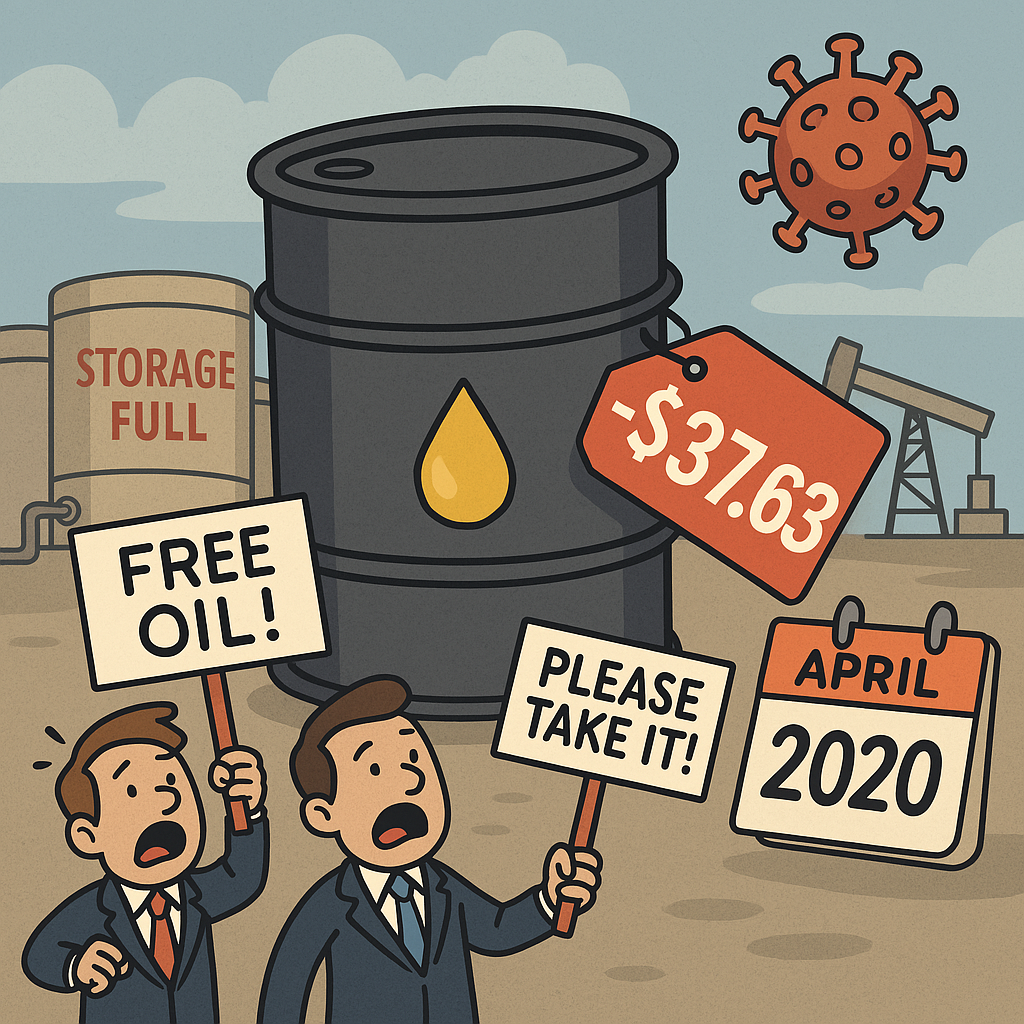
How COVID Crushed Demand and Made Oil Worth Less Than Nothing
Wait… How Can Oil Be Worth Less Than Zero?
Yep—you read that right.
On April 20, 2020, the price of U.S. oil (specifically WTI Crude) dropped to -$37.63 per barrel.
That means sellers were literally paying people to take oil off their hands.
It wasn’t a glitch. It was the wildest moment in oil trading history.
Why Did This Happen?
Let’s break it down:
- COVID-19 = Global Lockdowns
- Planes grounded. Cars parked. Factories shut.
- Oil demand collapsed almost overnight.
- Storage Tanks Filled Up
- With nobody using oil, storage facilities filled up FAST.
- Traders were stuck with oil and nowhere to put it.
- Oil Futures Expired
- Traders had contracts that required physical delivery of oil.
- But with no storage, they had to get rid of those contracts at any cost—even negative prices.
Negative Oil = Panic Button
The -37.63 price didn’t mean oil was worthless.
It meant short-term contracts were toxic because no one could handle the oil.
“Please take this barrel… and I’ll pay you $37 to do it.”
This was peak market dysfunction.
Why It Was a Big Deal
- It exposed how fragile the oil market is when supply and demand fall out of balance.
- It showed that financial contracts (like futures) don’t always match real-world logistics.
- And it made global headlines, becoming a symbol of just how broken things were during early COVID.
- This was a rare moment when basic supply and demand broke down.
- It’s a perfect case study in market psychology, storage limitations, and panic trading.
- And it shows how something we take for granted—like oil—can become a huge liability.
“Oil didn’t lose value. It lost demand, space, and timing.”
In April 2020, the world ran out of space for oil—and it became financially radioactive.
Now you understand why it happened.

